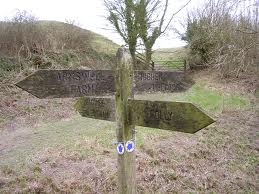Autumn's come late to the Summer Country; it seems to have crept up unnoticed, like a pantomime villain who sneaks onto the stage while your back's turned and the audience is screaming 'behind you!'.
For those of us with a predilection for melancholy this isn't a good time of year but you know what it's like, the foliage starts turning bronze and burnished gold and you've just got to get out there; into the woods for a fix of root, branch and leaf.
There's no point in beating about the bush - no pun intended; I'm an arboreal addict and come spring and autumn I can't get enough of the woods. In April it's the heady scent of ransoms that turns the shady nooks of Cranborne Chase into the deciduous equivalent of a crack den. Come October it's the irresistible lure of the Savernake Forest: a dazzling, hallucinogenic kaleidoscope of russets and copper-browns.
My close friend and confidante, the intriguingly handsome María Inés de la Cruz, tells me my compulsion's a consequence of living in northern climes. She reaches for her tattered copy of Byron’s Don Juan, locates the well-thumbed pages of Canto the First and reads out loud to me:
Tis a sad thing, I cannot choose but say,
And all the fault of that indecent sun,
Who cannot leave alone our helpless clay,
But will keep baking,
broiling, burning on,
That howsoever people fast
and pray,
The flesh is frail, and so
the soul undone:
What men call gallantry,
and gods adultery,
Is much more common where
the climate's sultry.
But then I turn to Canto the Fourth and remind her that those 'whom the gods love die young'. Result! She replaces the book and, giving me a look that would burn a hole in the polar ice cap, storms off to find her boots. We've both been shacked up inside for over thirty-six hours, we need to get out and sniff the heady scent of liberty, otherwise there'll be blood splattered over the walls La Villa Ramblanista.
Looks likes it’s going to be one of those weekends …











